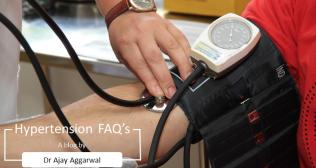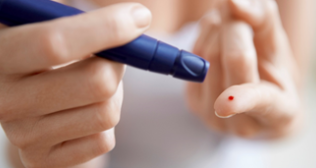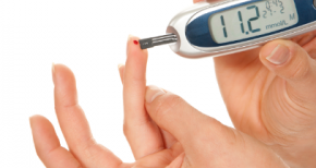
Best Diabetes Treatment in Mumbai
Best Diabetes Treatment in Mumbai
Diabetes mellitus is a group of conditions that occur when your blood sugar (glucose) is too high. This happens because your pancreas either fails to produce enough or any insulin, or your body fails to use insulin correctly. Diabetes can manifest in different forms, with type 2 diabetes being the most common. There is currently no cure for diabetes, but it can be effectively controlled through a combination of treatment strategies. At Fortis Hospital, Mulund, our endocrinologists are committed to helping you or your loved one successfully manage diabetes using the latest treatments, information, and technology available.
Diabetes is a major global public health threat that can affect people of all ages. In India, it is a pressing concern as the prevalence of diabetes has been rising more rapidly in both rural and urban areas. A healthy lifestyle can help prevent or delay the onset of diabetes.
This article will focus on the most common types of diabetes - their symptoms, causes, diagnosis, treatment and management, as well as preventive measures.
What is diabetes and how does it develop?
Diabetes is a metabolic disease characterised by high blood sugar or hyperglycaemia. Your body breaks down the food and drinks you consume into glucose and releases it into the bloodstream. When your blood sugar levels rise, your pancreas releases insulin, a hormone that helps glucose get into your cells for later use as energy.
With diabetes, your pancreas doesn’t make enough insulin, or your body cannot use it efficiently, causing glucose to build up in your bloodstream instead of reaching your cells. This results in high blood sugar levels or diabetes. Over time, high blood sugar can lead to various health problems that affect your eyes, heart, nerves, and kidneys.
What are the types of diabetes?
Diabetes can occur in different types. The most common types include:
- Type 1 diabetes: Also known as juvenile diabetes, type 1 diabetes occurs when the pancreas doesn’t make insulin that helps cells absorb glucose from your blood. It is an autoimmune disease in which the immune system attacks and destroys cells in the pancreas that make insulin for unknown reasons. This type of diabetes usually affects children and young adults, although it can develop at any age.
- Type 2 diabetes: In type 2 diabetes, the cells in your body cannot use insulin properly – meaning your body becomes resistant to insulin, a condition known as insulin resistance – and glucose builds up in the blood. Type 2 diabetes is the most common type, accounting for about 90-95% of all cases of diabetes. It affects mainly adults, however, more children are now diagnosed with type 2 diabetes.
- Gestational diabetes: This type of diabetes develops during pregnancy when a hormone produced by the placenta keeps the body from using insulin effectively, resulting in high blood sugar levels. In most cases, gestational diabetes goes away after childbirth, but women who develop this condition while pregnant have a higher risk of having type 2 diabetes later in life.
- Prediabetes: Your blood sugar levels are higher than what is healthy for you, but not high enough to be diagnosed as type 2 diabetes. Prediabetes or borderline diabetes puts you at an increased risk of developing type 2 diabetes and other health problems, such as heart disease and stroke, in the future.
Other types of diabetes include:
- Type 1.5 diabetes or latent autoimmune diabetes
- Type 3c diabetes
- Monogenic diabetes
- Cystic fibrosis-related diabetes
What are the signs and symptoms of diabetes?
Diabetes, particularly type 2, can go unnoticed for a long time, as the symptoms can be so mild. Common symptoms of diabetes (of any type) include:
- Increased thirst
- Increased hunger
- Losing weight without trying
- Blurred vision
- Frequent urination
- Fatigue
- Numbness, tingling, or pain in the hands or feet
- Sores or cuts that heal slowly
- Recurrent skin/vaginal yeast infections
Some other symptoms depend on the type of diabetes you may have.
In type 1 diabetes, symptoms tend to develop quickly and be more severe, such as vomiting, abdominal pain and fruity-smelling breath – which are signs of a severe and life-threatening complication called diabetes-related ketoacidosis (DKA).
Consult a doctor if you notice any of these symptoms, because early detection and treatment can help you successfully manage your diabetes and prevent complications.
What causes diabetes?
Diabetes, in all cases, is caused by high blood sugar, although the reason why this happens differs based on the type of diabetes.
- In type 1 diabetes, the exact cause is not known. However, experts believe that genes and environmental factors may play a role by triggering the immune system to destroy insulin-producing beta cells in the pancreas.
- In type 2 diabetes, insulin resistance – a condition when your body can’t use insulin properly – is the main cause. Various factors, including lifestyle choices, genetics, and certain conditions, contribute to insulin resistance.
- In gestational diabetes, hormonal changes during pregnancy can make it difficult for glucose in the blood to enter the body’s cells. This causes insulin resistance, resulting in high blood sugar during pregnancy.
Risk factors for diabetes
Some risk factors can be controlled or managed through lifestyle changes, whereas others, such as age and family history, can’t be changed or controlled. Sources of risk also depend on the type of diabetes.
Risk factors for type 1 diabetes include:
- Age – children, teens, or young adults
- Family history – a parent or sibling with type 1 diabetes
- Genetics – certain genes linked to the condition
- Environmental factors – viral infections and certain immune responses
Risk factors for prediabetes and type 2 diabetes include:
- Being overweight or obese
- Age 45 or older
- A family history of type 2 diabetes
- Not physically active
- Have had gestational diabetes
- Certain conditions like non-alcoholic fatty liver disease, high blood pressure, high cholesterol, or high triglycerides
Risk factors for gestational diabetes include:
- Had gestational diabetes during a previous pregnancy
- Being overweight or obese
- Over age 25
- Physical inactivity
- A family history of type 2 diabetes
- Certain conditions like polycystic ovary syndrome (PCOS), high blood pressure, etc
How do doctors diagnose diabetes?
Healthcare providers diagnose diabetes and prediabetes using a variety of tests that check your glucose level, including:
- Fasting blood glucose test – to measure your blood sugar after you’ve fasted for at least 8 hours.
- Random blood glucose test – this test can be done at any time.
- A1c or HbA1C test – to measure your average blood sugar level over the past 2-3 months.
Test results for diagnosis of prediabetes and diabetes:
Diagnosis
Fasting blood glucose test
Random blood glucose test
A1c or HbA1C test
Normal
Less than 100mg/dL
NA
Less than 5.7%
Prediabetes
100 mg/dl to 125 mg/dL
NA
5.7–6.4%
Diabetes
126 mg/dL or higher
200mg/dL or higher
6.5% or higher
Tests used to screen for and diagnose gestational diabetes include - glucose challenge test and glucose tolerance test.
How is diabetes treated?
Treatment and management of diabetes involve several strategies, depending on the type of diabetes an individual has. Treatment plans for diabetes are immensely individualised because diabetes affects everyone differently. At Fortis Hospital, Mulund, our care team will create a personalised plan tailored to your unique needs.
The main aspects of treating and managing diabetes include:
- Regular blood sugar monitoring – to keep your glucose levels in your target range as much as possible.
- Insulin – people with type 1 diabetes need to take insulin every day to survive and manage blood sugar. Some people with type 2 diabetes and gestational diabetes also need insulin treatment.
- Oral diabetes medications – people with type 2 diabetes and prediabetes may need to take medicines to manage blood sugar levels. Oral medication may be required in some cases of gestational diabetes.
- Lifestyle changes – a healthy lifestyle, such as meal planning and choosing a balanced diet, getting regular exercise or physical activity, is a key component of effective diabetes management. It will help you keep your blood sugar levels and other vital signs within the ranges recommended by your doctor. Adopting a healthier lifestyle can help you manage your weight, resulting in better blood sugar control.
Can you prevent diabetes?
You can’t prevent some forms of diabetes, such as type 1 diabetes. However, you can take steps to prevent or reduce your risk for developing prediabetes, type 2 diabetes and gestational diabetes. These include:
- Eating a balanced diet
- Limiting alcohol, added sugars, saturated fats, and processed foods
- Exercising regularly
- Maintaining a healthy weight
- Getting adequate sleep
- Managing stress
Takeaway
Diabetes is a complex disease that requires careful blood sugar control through a combination of lifestyle adjustments and medications. Poor blood sugar control can lead to a variety of serious complications, including kidney failure, stroke, eye and nerve damage.
Successful diabetes management involves a team effort – your care team, family, and friends, etc. If you have a risk factor or are experiencing any symptoms of diabetes, talk to a doctor promptly. Early diagnosis and treatment can help you manage the condition and prevent any potential complications. With proper care, you can live a long and healthy life with diabetes.
Categories
Clear allMeet the doctor

- Diabetology/Endocrinology | Endocrinology
-
12 Years
-
2000



















